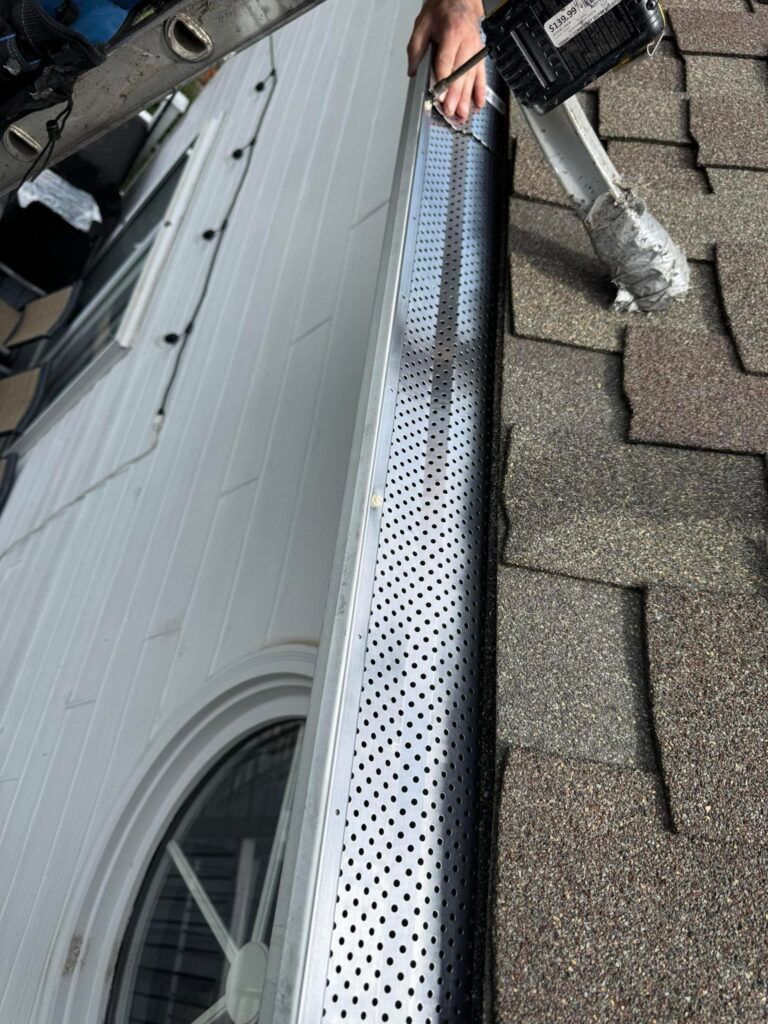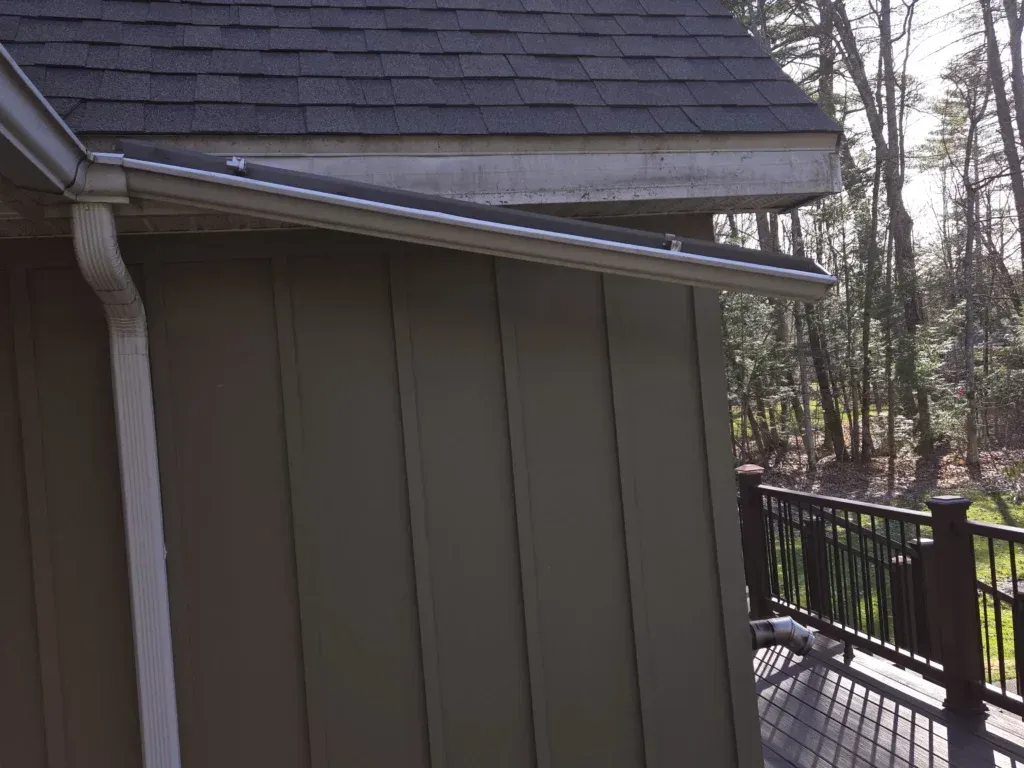Preparing Your Gutters for Rain
Spring storms in Wichita bring intense rain and the looming threat of tornadoes, making storm gutter maintenance essential for protecting your home. Your gutters play a vital role in directing water away from your foundation and preventing costly water damage during severe weather events.
Properly maintained gutters can handle up to 12 inches of rainfall per hour, significantly reducing your risk of basement flooding and foundation issues during Wichita’s heavy storms. Regular gutter maintenance before tornado season begins ensures your gutter system functions at peak performance when you need it most.
Your home deserves protection from Kansas’s unpredictable weather patterns. With the right preparation and professional maintenance from Wichita Gutters, you can face the upcoming storm season with confidence, knowing your property is ready for whatever Mother Nature brings.
[If you've already been hit by a storm, don't worry, our gutter repair services will help!]
Essential Gutter Preparation for Tornado and Rain Season
Proper gutter maintenance and preparation can protect your home from water damage during Wichita’s severe weather season. Taking specific steps now will safeguard your property when storms hit.
Understanding Wichita’s Weather Risks
Wichita experiences peak tornado activity between April and June, with intense rainfall often accompanying these storms. Your home faces wind speeds up to 200 mph during severe tornadoes.
Spring storms can dump several inches of rain in just hours, putting immense pressure on your gutter system. Flash flooding poses a significant threat to homes with inadequate drainage.
Heavy hail, common during tornado season, can damage or dislodge gutters that aren’t properly secured. Most hailstorms in Wichita produce stones ranging from penny to golf ball size.
Inspecting and Cleaning Gutters Before the Storm
Start with a thorough inspection of all gutter components. Check for loose fasteners, separated seams, and signs of rust or corrosion.
Remove all debris, leaves, and buildup from your gutters and downspouts. Use a garden hose to test water flow and identify any blockages or leaks.
Critical inspection points:
- Gutter brackets and supports
- Downspout connections
- Seams and corners
- End caps and outlet tubes
Test your downspout drainage by ensuring water flows at least 6 feet away from your foundation. Install downspout extensions if needed.
[Good gutter maintenance is key to keeping your gutters lasting long - See our gutter cleaning in Wichita for more]
Choosing Durable Materials for Wichita Gutters
Seamless aluminum gutters offer excellent durability for Wichita’s climate. These gutters resist rust and can handle substantial water flow.
Recommended specifications:
- 6-inch gutter width
- .032 inch aluminum thickness
- Heavy-duty brackets every 24 inches
Select gutter guards designed to withstand high winds and prevent debris accumulation. Micro-mesh systems provide superior protection against small debris while maintaining water flow.
Professional-grade fasteners and hangers help prevent gutter separation during intense storms. Opt for stainless steel components to prevent corrosion.

Professional Tips for Ongoing Gutter Maintenance
Regular maintenance keeps your gutters functioning properly and protects your home from water damage. A proactive approach to gutter care can prevent costly repairs and extend system longevity.
Scheduling Seasonal Gutter Service
Mark your calendar for gutter cleanings at least twice per year, once in early spring and again in late fall after most leaves have fallen.
For homes near trees, quarterly cleanings may be necessary to prevent debris buildup. Schedule additional inspections after major storms.
Consider setting up a maintenance agreement with a professional gutter service. They’ll track the timing and ensure nothing gets overlooked.
Key maintenance tasks include:
- Removing leaves, twigs and debris
- Checking downspout function
- Testing water flow
- Tightening loose fasteners
- Inspecting seams and joints
[Need more info? When Should You Clean Your Gutters]
Identifying Early Signs of Gutter Damage
There are some clear signs of gutter damage. Watch for water marks or stains on exterior walls – this often indicates overflow from clogged or damaged gutters.
Common warning signs:
- Sagging or pulling away from fascia
- Visible cracks or holes
- Rust spots or peeling paint
- Standing water in gutters
- Water damage around foundation
Check your gutters after storms for new damage or displacement. Look for loose or missing hardware and sections that have separated at the seams.
Inspect downspouts for proper attachment and clear flow. Water should exit at least 4-6 feet from your foundation.
[If you're not sure how much damage has been done, see our guide for Top 5 Signs your Gutters were Damaged by Storms]

Gutter Preperation Frequently Asked Questions
What steps should I take to ensure my gutters are ready for tornado and heavy rain season?
Clean your gutters thoroughly, removing all debris, leaves, and buildup.
Check and tighten all gutter fasteners, hangers, and downspout connections.
Test your gutters with a garden hose to ensure proper water flow and identify any leaks or drainage issues.
How often should gutters be inspected and maintained in Wichita specifically for severe weather conditions?
Schedule professional inspections twice per year depending on the season – once in early spring before tornado season and again in fall after leaves drop.
Perform additional checks after major storms or high wind events.
Can installing gutter guards improve the chances of withstanding Wichita's extreme weather?
Yes! Quality gutter guards reduce debris accumulation and help maintain consistent water flow during heavy rains.
Professional-grade guards can withstand high winds common in tornado season while keeping gutters clear.
What are the signs that gutters may not perform well during intense storms in Wichita?
Look for sagging sections, loose fasteners, or gaps between gutters and fascia boards.
Check for water marks or paint damage beneath gutters, indicating overflow issues.
Inspect downspouts for proper attachment and positioning away from your foundation.
Are there any particular materials or types of gutters that recommended for homes in tornado-prone areas like Wichita?
Seamless aluminum gutters offer excellent durability and wind resistance for Wichita’s climate.
Professional-grade hangers and brackets provide enhanced stability during severe weather events.
What professional gutter services does Wichita Gutters offer to prepare for the tornado and rain season?
We provide comprehensive gutter inspections, professional cleaning, and repairs using commercial-grade materials.
Our team specializes in seamless gutter installation and gutter guard systems designed for extreme weather conditions.
We offer emergency repair services and post-storm assessments to ensure your gutter system remains functional.
